
Thank you and farewell
Thanks to all the organisers, exhibitors, venue staff, support staff, visitors, companies, and individuals that attended. You make the renewable energy industry such a dynamic and vibrant space. From all of us at pv magazine, it was an honour to attend All Energy Australia and share our enthusiasm for solar with such fantastic, warm people. We enjoyed every minute of our time at the conference and exhibition and look forward to continuing to bring you all the latest solar and storage news in the coming year before the next #AllEnergyAU!
– Jonathan, Andrea, Marina, Dave, Natalie, and Paul.
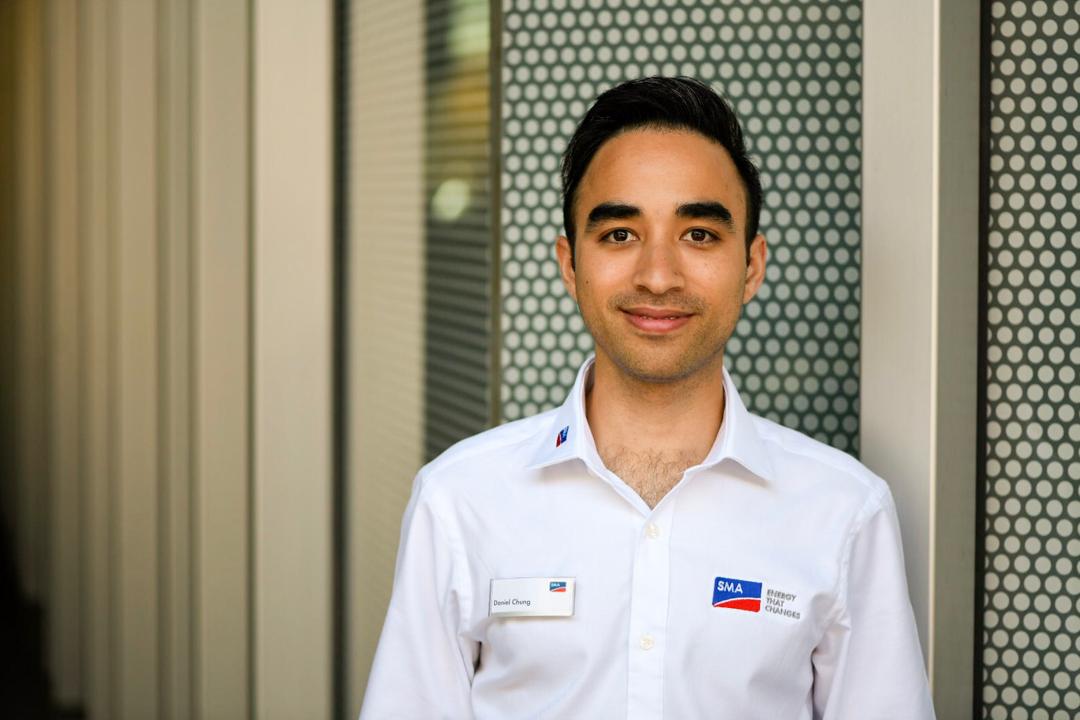
Giving end users and plant managers more control
This pv magazine live is powered by our proud sponsor SMA. We visited the German inverter manufacturer’s booth earlier to take a look at some of their new innovations and offerings for the Australian market. With the largest space ever in All Energy Australia, SMA has spread its products across two booths, with their offerings for residential and commercial on one side of the aisle and their larger utility-scale products on the other.
On the residential and commercial front, they conceptualise what they do as allowing end users to do three things:
- Generate power.
- Manage power.
- Store power.
First, the company’s 10 kW Sunny Tripower 10.0, SMA presents a three-phase string inverter with the free and automatic shade management SMA ShadeFix. It utilises a patented algorithm to perform string-level optimisation in Sunny Boy and Sunny Tripower inverters. This maximises energy production in most shading conditions with no additional hardware or parts.
Read more about the SMA ShadeFix.
Their new offering is Energy Storage Business, which is a free-standing battery with active cell balancing. It integrates perfectly with the Data Manager M which connects to ennexOS, the SMA portal for all energy control and monitoring. SMA is going the extra step in its push to bring these to market with an extra level of support for installers to learn about the system and how to set it up.
Read more about the SMA Energy Storage Business.
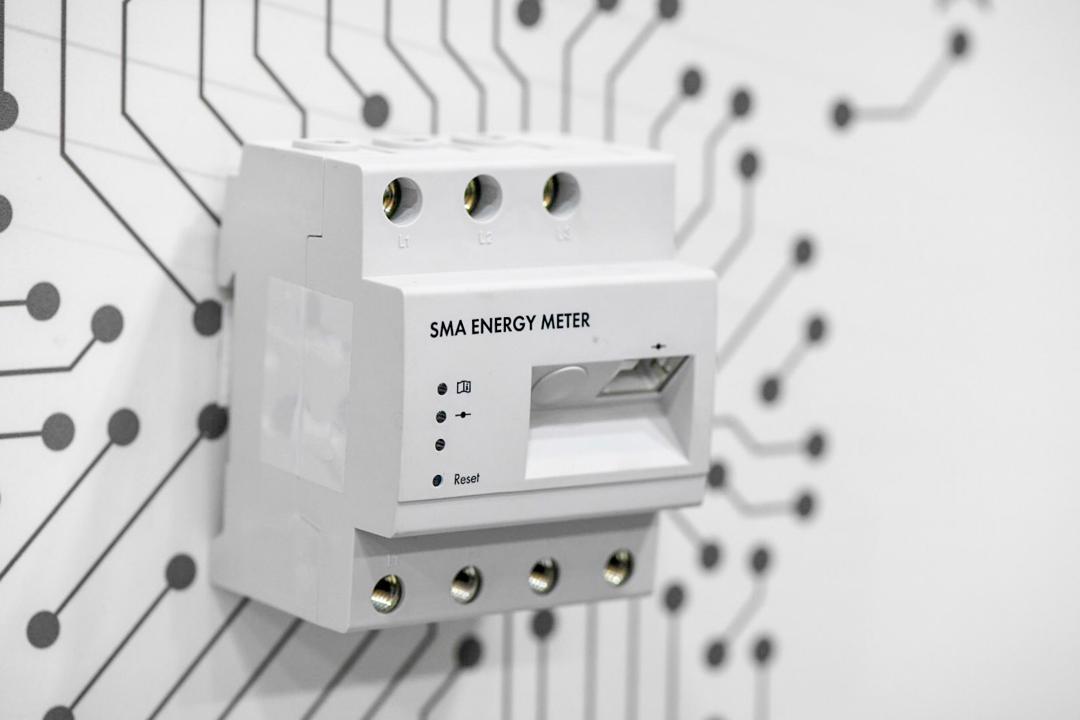
Data Manager M is the “brains” of their energy management system. It can commission a whole large commercial-scale solar site from the one central hub. It monitors energy not only from your inverters but also any connected metre (e.g. gas metre or electricity metre). This gives you a centralised dashboard of all energy flows through the site. It has a flexible interface to integrate with a range of building management or SCADA systems. Application engineer Daniel Chung also hinted at a number of new energy management functions in the device that SMA will announce soon.
The firm has also brought Smart Connected to the Australian market, which offers proactive inverter monitoring. This gives SMA data on performance so they can detect any issues that arise and order shipments of replacement inverters in a guaranteed timeframe.
SMA’s offerings cover the whole range of home systems: with the Sunny Boy tackling 1.5 to 6 kW systems, and Sunny Tripower for systems in the 3-10 kW range. And these are modular systems that can handle up to 1.5 MW of inverter capacity and 5 MWh of storage for larger commercial applications.
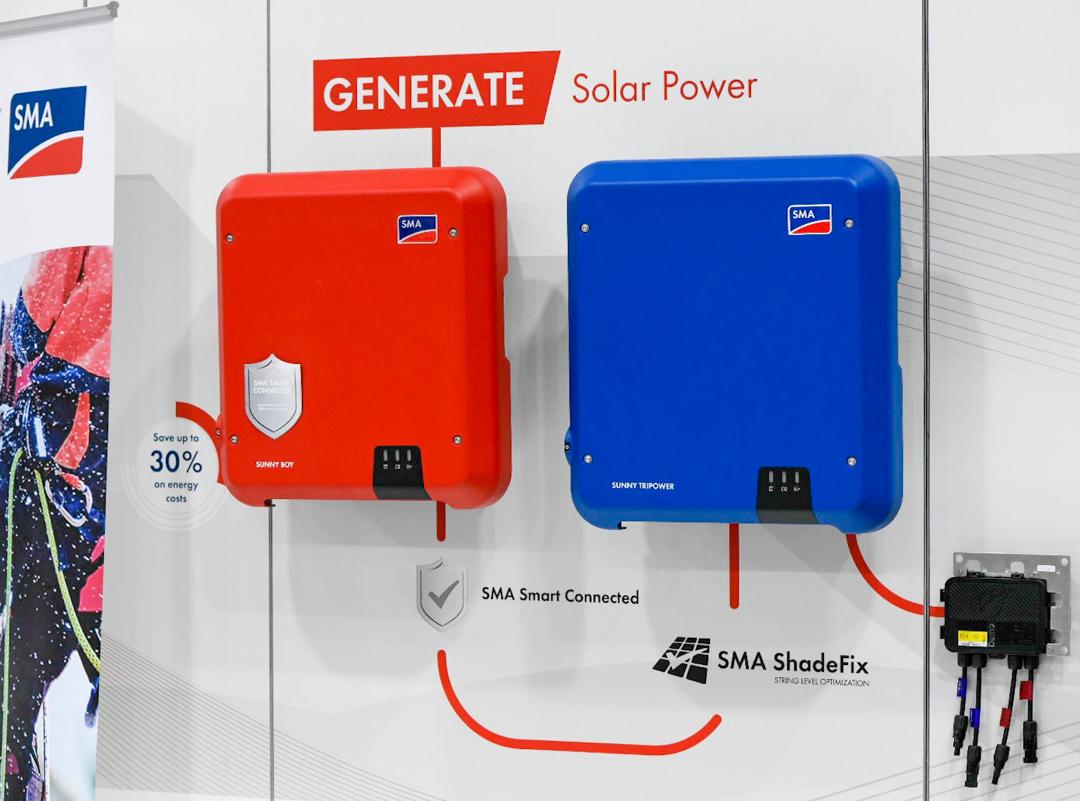
On the utility-scale front, SMA is further ramping up the size and feature set of its products. The Sunny Central UP is a behemoth that dominates the trade show floor, offering 4.6 kVA and true 1,500 VDC technology. It connects to a DC-DC converter for integration with DC containerised batteries from most manufacturers. And it has been installed in almost 100 projects across the Pacific Islands, USA, and Europe.
SMA clearly prioritises supporting its customers as a key element of its strategy. It has the 360° Business Support app for installers and also offers training and support in the planning and design of systems, as well as engineering services and O&M. This is a key value-add that sets SMA apart from other inverter manufacturers: sharing expertise and not just focusing on the technology but also the people throughout the value chain. SMA endeavour to support customers from the very beginning to ensure their products are installed and integrated correctly.
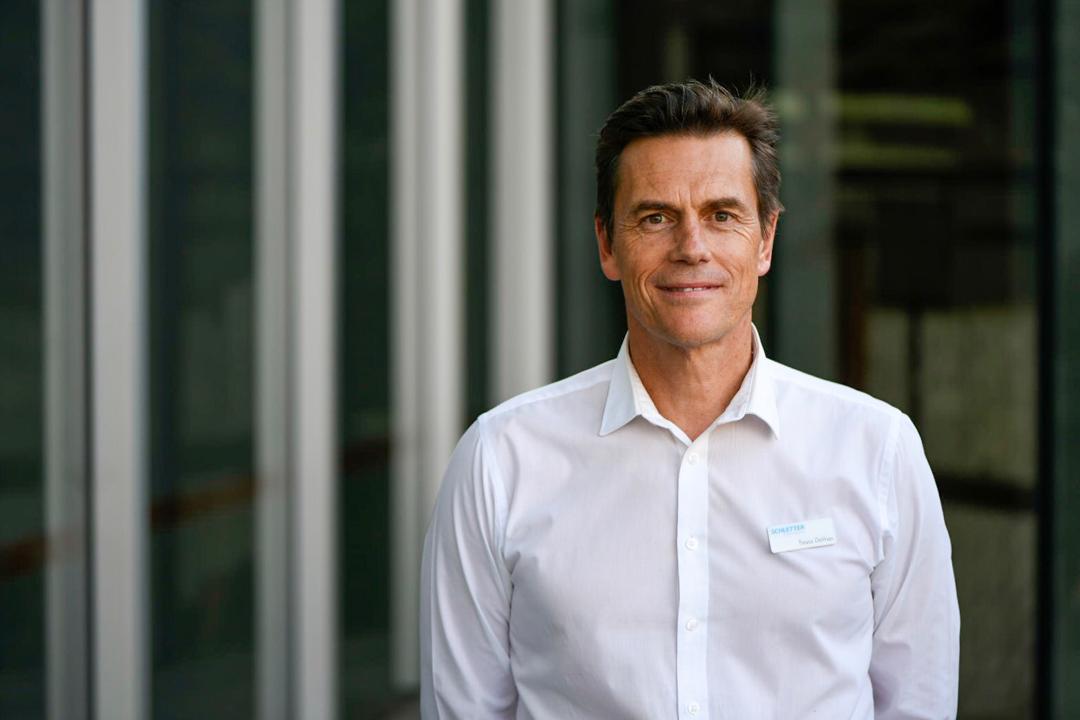
Schletter gets its first 600 kW of trackers installed in Australia
Introducing new technologies into a relatively conservative marketplace like large-scale solar is no trivial challenge, and one that mounting structure supplier Schletter has had to overcome with its new tracking system.
Schletter, taking a ‘tell-it-as-it-is’ approach to branding, introduced the Schletter Tracking System to the market around one year ago – and can now boast of its first 600 kW of Aussie projects. And the projects themselves pretty unique.
Six rural properties across New South Wales are installing 100 kW bifacial arrays, coupled with Schletter’s trackers. The solar systems pump water on the properties during the day, when electricity prices are high.
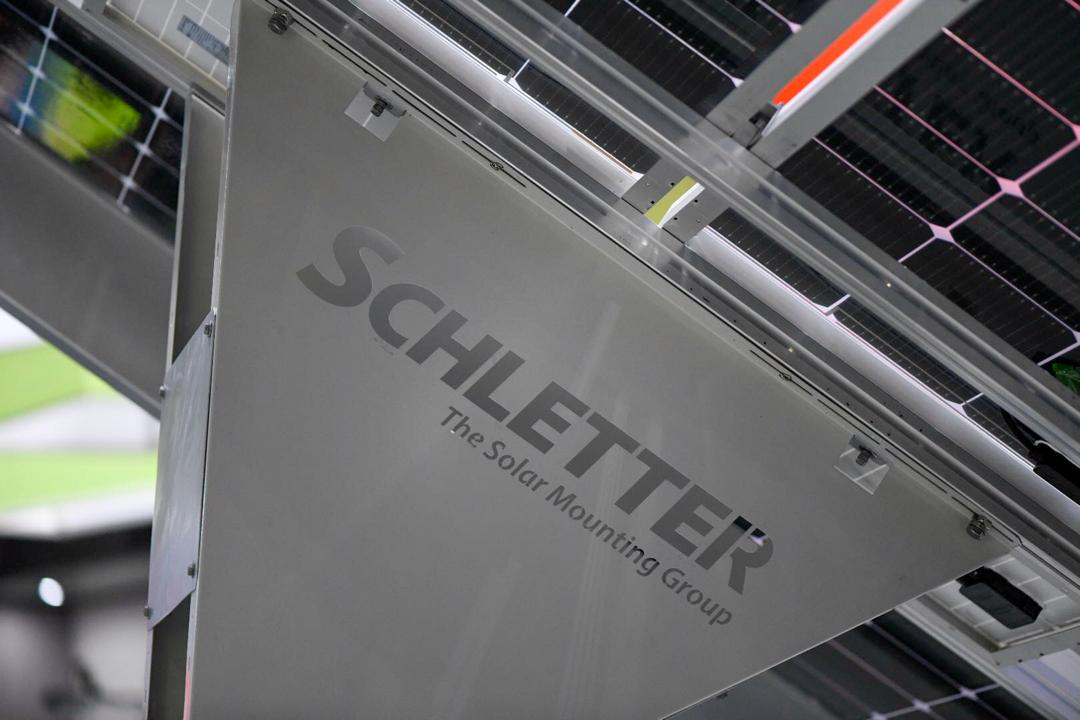
Schletter Australia MD Trevor De Vries says:
It shows that even at 99 kW, tracking technology makes sense.
Sungrow targeting C&I and utility-scale
Chinese inverter supplier Sungrow is looking to go big in the Aussie market. The company is taking aim at the C&I market segment with a range of high-powered string inverters – and looking to gain a foothold in utility scale in 2020.
Sungrow hopes to supply the bigger end of town, having already established itself in the residential space – claiming almost 15% market share in 2019.
“With our new products in C&I, there will be very big increase in future years,” said Sungrow Australia’s director of sales Joe Zhou.

While yet to supply a project, Sungrow is taking its first steps into the utility scale market.
It was a very good start for us this year in utility.
Yesterday, Sungrow held a ceremony to celebrate a 100 MW residential distribution partnership with Prosun Solar.
Optimism abounds
Feels even bigger than last year, and an amazing community of solar professionals building so many great businesses. The underlying economics in Australia now make for a lot less political risk relative to other markets, it’s great, we can all really lean in for the next phase of growth!
– OpenSolar’s co-founder Andrew Birch
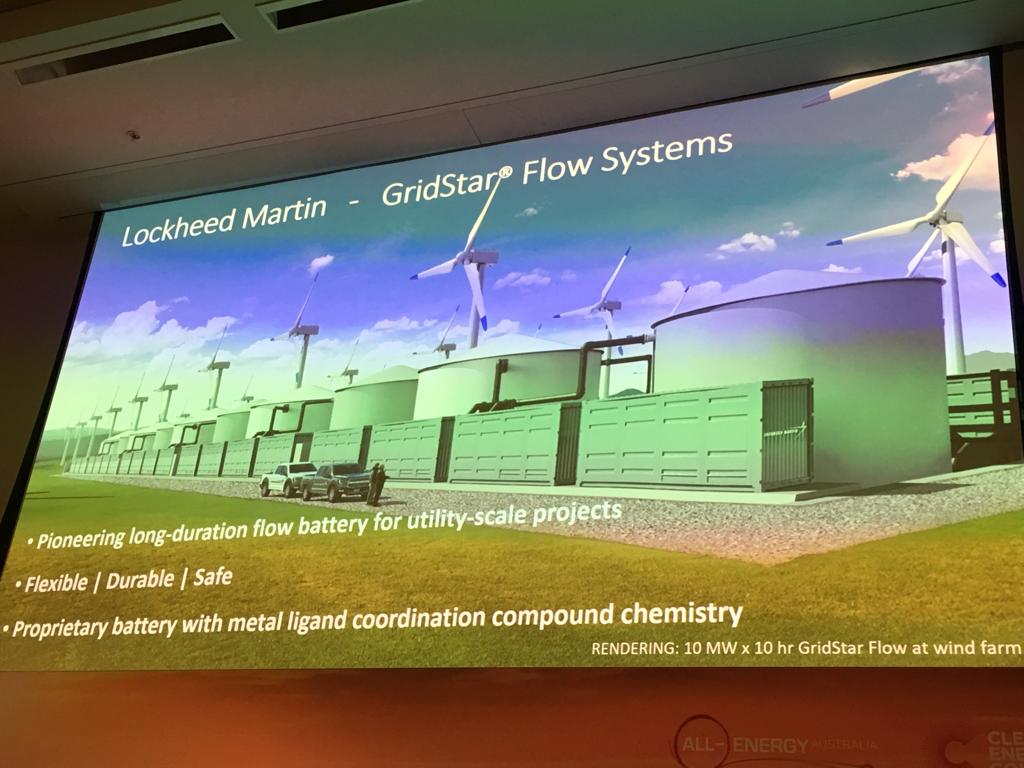
Why is someone from Lockheed Martin talking about energy storage?
In an All Energy session discussing the bankability of new grid-scale battery storage options, Kevin Nitschke, Business Development Manager of Lockheed Martin’s Energy division revealed, “We’ve engineered a flow battery around grid-scale sizing.”
With 100 MWh capacity, the Lockheed Martin GridStar Flow battery technology is based around long duration, explained Nitschke. “Once you build a flow battery and you want to add more duration — you want to go from a two-hour battery to a six-hour battery or a 12-hour battery — you just need to build bigger tanks and fill them up with the electrolytes.
So once you’ve got that core cost of power units, a bit of plumbing and some tanks … it’s a much different financial recipe than Lithium. With a Lithium solution you need more cells.
Flow batteries are also “happy being daily discharged,” said Nitschke. “You can charge them to 100% during the day and discharge to zero at night, and repeat — 24/7. So you’re actually getting 100% of the usefulness out of that battery every day.”
To further reduce costs, Lockheed Martin has engineered its own electrolytes. The chemistry has low acidity and is therefore much less corrosive than some other flow cocktails, which subsequently also helps reduce the cost of plant — no special pipes or materials required.
For long-duration storage, concluded Nitschke, the costs can stack up in favour of flow.
Issues with quality persist
Australia’s rooftop segment is a world beater. But there remain problems with quality, and installations and the components not living up to some of the claims of suppliers, says SMA’s John Susa. The Executive Vice President Global Sales and Service for the company is in Melbourne for All-Energy Australia and he says it‘s time for real-world performance of components to live up to claims on their data sheets.
Read more:

Solar forecasting pays back to solar farm operators and the NEM
Visitors to All Energy Australia have been finding their way to a small stand at the end of the exhibition hall where Victor Depoorter and Matthew Jeppesen of Proa Analytics are showcasing the benefits of solar forecasting.
Proa is participating in an ARENA trial which demonstrates the benefits of self forecasting to grid stability and to solar farms.
Working one solar farm at a time — Tailem Bend Solar Farm in September, Kidston Solar Project this month — across a range of geographical zones, Proa is proving to AEMO the accuracy of its forecasting.
This accuracy is key to helping solar farm owners manage their operations, and reduce the FCAS penalties when their output doesn’t match AEMO’s forecast generation — such charges can amount to tens of thousands of dollars a week.
Proa’s Technical Director, Victor Depoorter, says:
By reducing the deviation, the causer-pays factor that determines the charges to each solar farm are reduced, which makes forecasting investible.
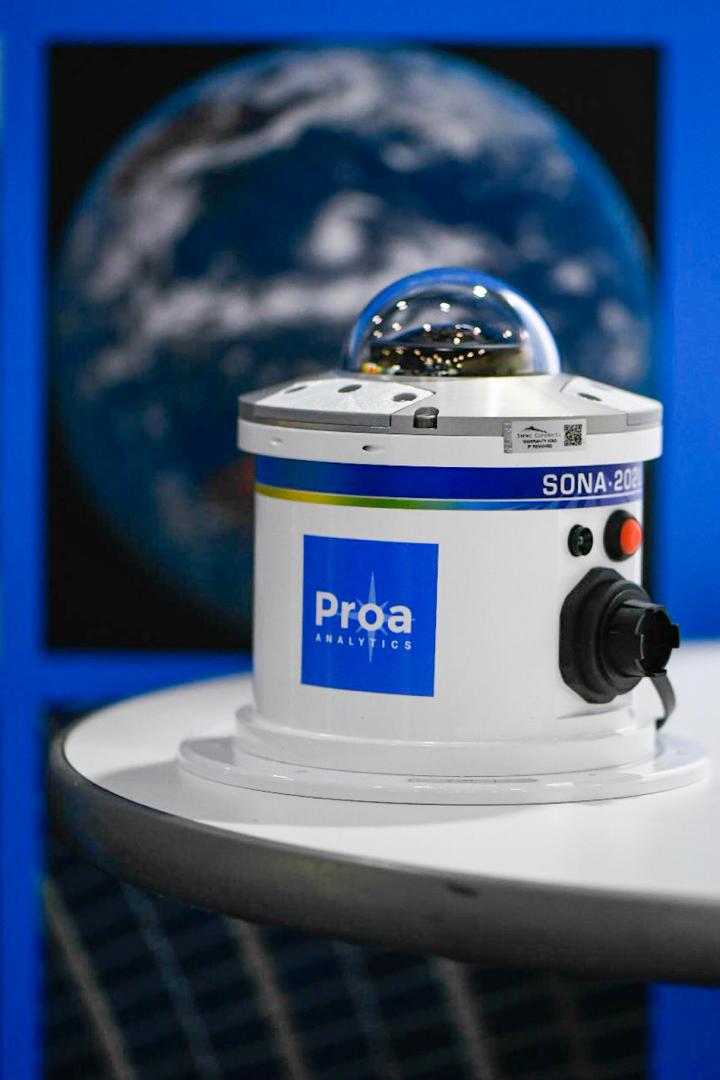
How did your product come about?
Depoorter: I decided to do a research project around solar forecasting because I could see lots of value coming up. We went into secondment for AEMO to develop a rooftop PV model, estimating how much rooftop PV was producing in any part of the NEM. They used that for long-term planning, and then I moved my research towards producing a forecasting tool using satellite imagery, which was the basis of my PhD.
What has AEMO’s response been to the successful integration of your forecasting methods into its central dispatch engine?
Depoorter: They have been very helpful overall. This was a bit of a learning process for the forecasting vendors, for the solar farm operators and owners, and also for AEMO itself. It was a big new piece integrating into their system. I think they were nicely surprised by how quickly we were able to deliver.
Jeppesen: The head of their operational forecasting said it was a milestone for the industry.
What are you focused on at the moment?
Depoorter: We want to get installed at more solar farms and make sure we keep providing a very, very good service. We want to take every step securely to keep building value for the industry.
We’ll be starting the trial at Bannerton Solar Farm in the next few weeks, and next will be Oakey, and then hopefully some new solar farms we’ve been talking to here at the show.
Sharing generation and storage

Twitter perspectives on this morning's plenary
Head of a UK demand response start-up @sarabelltempus gave Australian energy market regulators a warning about moving to a ‘capacity market’, saying they effectively serve as a subsidy to fossil fuels. #AllEnergyAU https://t.co/srceIBwqA4
— Michael Mazengarb (@MichaelM_ACT) October 24, 2019
.@darrenhmiller – “Solar itself has seen a ten-fold cost reduction in the last decade. The message I leave with you is that we can do the same for #hydrogen. It is entirely possible and within reach.” @ARENA_aus #AllEnergyAU #EEE19 pic.twitter.com/aa3p3M7lE8
— EnergyEfficiencyCo (@EECouncil) October 23, 2019
The #Netflix of energy – “Hydrogen has the potential to be a game-changer for energy as a versatile emissions-free fuel with many end uses that leverages low-cost renewable electricity” – @darrenhmiller @AllEnergyAU #AllEnergyAU pic.twitter.com/28vTpbfyig
— ARENA Newsroom (@ARENA_aus) October 23, 2019
Day 2 at All Energy Australia
All-Energy Australia kicked off yesterday with thousands gathering at the MCEC. With so much more happening on Day 2, there’s still time to visit #AllEnergyAU. The conference starts at 8:45am, while expo doors open at 9:00am. See you there! pic.twitter.com/GS7VfIXfdu
— All-Energy (@AllEnergyAU) October 23, 2019
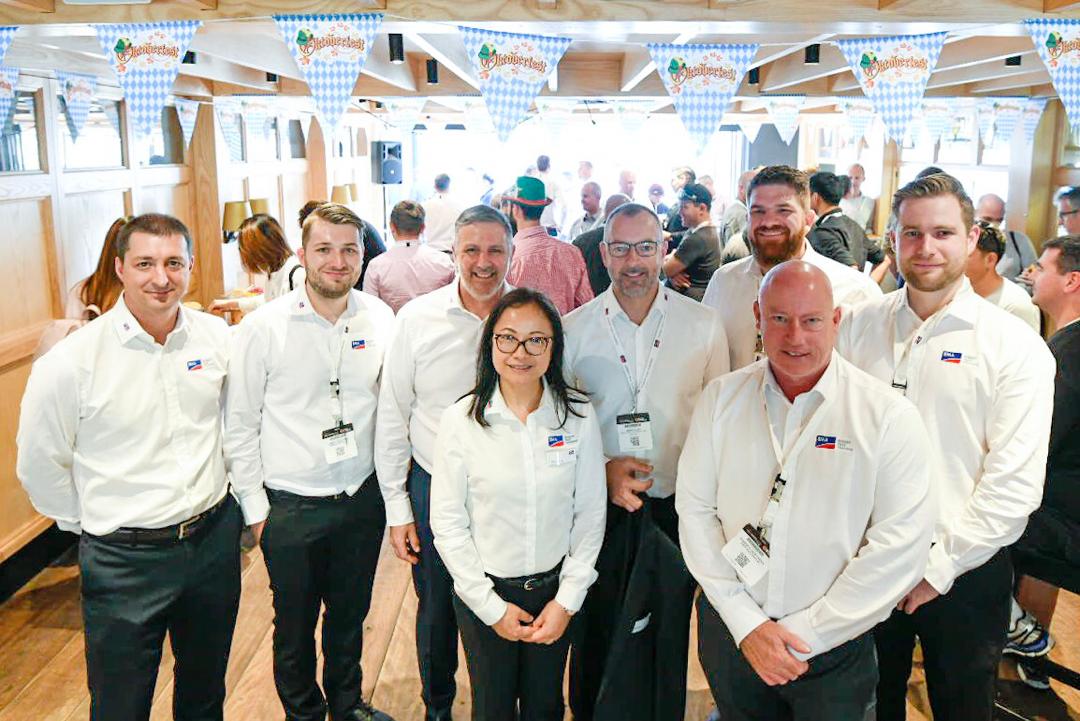
SMA Power UP lunch
At the @SMA_Australia Power UP lunch at Munich Brauhaus for #AllEnergyAU @AllEnergyAU pic.twitter.com/LOYNgTvyR4
— pv magazine Australia (@pvmagazineoz) October 24, 2019
“#Solar and #storage technologies are now so smart and advanced that they are delivering results for consumers that we would not have dreamt of five years ago.” – Jonathan Fisk, Director @SolarayEnergy at #AllEnergyAU pic.twitter.com/i3pQMih37A
— pv magazine Australia (@pvmagazineoz) October 24, 2019

A fantastic opening plenary session at All Energy Australia this morning
Ivor Frischknecht, a director of C4NET and CleanCo Queensland, introduced the morning with encouragement, saying Australia has faced greater disruption to its energy system before (such as gas versus electricity in the gold-rush era), and it went very well…
Enter Enrique Iriarte, Director of Innovation and Technology at Acciona, said, “We develop technology for the present and for the future.” Among Acciona’s solutions in the field are wind turbine towers, encased in flexible adhesive solar modules. “Why not use the same place to generate energy from the sun and the wind?”
Why not generate enormous amounts of solar and wind and create a whole new renewable-energy industry for Australia? Darren Miller CEO of ARENA demonstrated how far Australia’s hydrogen potential has already come, and summed up that “hydrogen is going to be this technology just like Netflix” — which provided a lower-cost, more convenient entertainment system leveraging off the low-cost of high-speed broadband. So hydrogen will leverage the low costs of abundant solar and wind to provide a game changing renewable energy fuel — one that could go from zero to 100% in a decade or two.
The following “rockstar” panel of energy luminaries got down in the dirt of how the shift in energy supply will affect the design of Australia’s electricity system — it demonstrated in case studies and research the tremendous opportunity and challenges posed by distributed energy resources:
Among the key observations:
Ivor Frischknect:
We need DERs to be a fully integrated part of the system. We have grid problems as a result of rooftop generation in a very localised way, so making changes in system design is very urgent.
Audrey Zibelman, CEO of AEMO:
We can’t talk about the energy system as transitioning. The energy system in Australia has transitioned. The power system is a combination of multiple systems that all need to work together. They’re challenges we have to start managing now.
Guy Chalkley, MD of Western Power:
One of our challenges is that rooftop solar penetration means we probably put the equivalent of a new power station onto our network every few months… Three years ago, we were talking about what the system high will be, people are now taking on bets on how low it will be. Our really bad scenario at the moment is three days of really heavy sun and then a cloudy day ….
Anthea Harris, Deputy Secretary for Energy, DELWP, in Victoria:
A big program like solar homes can be used to drive better outcomes: safety for households and installers; quality of kit that gets put on to people’s houses … We’ve already used that program to ensure that all inverters installed under our scheme are smart inverters; all the batteries that we’re rolling out, we’ve required them to be VPP ready.
Sara Bell, Founder, Tempus, an innovator in getting businesses to use energy more flexibly:
In January this year, when there was sustained high air temperature in Adelaide of 23 degrees, we pre-chilled the air conditioning units of our customers, so that we could turn them off during the price spike, while still delivering exactly the same comfort level that everyone wanted in their buildings. That saved, at one site alone $70,000.
Lior Handelsman, Founder Solar Edge:
You can have millions of separate systems, and pool them into one dispatchable smart load that gives network operators and utilities the ability to dispatch as they need to.
Rob Murray-Leach, Head of Policy at the Energy Efficiency Council:
Japan lost 30% of its generation after Fukushima.They replaced 100 TWh of lost nuclear energy with energy efficiency in a very, very short period of time.
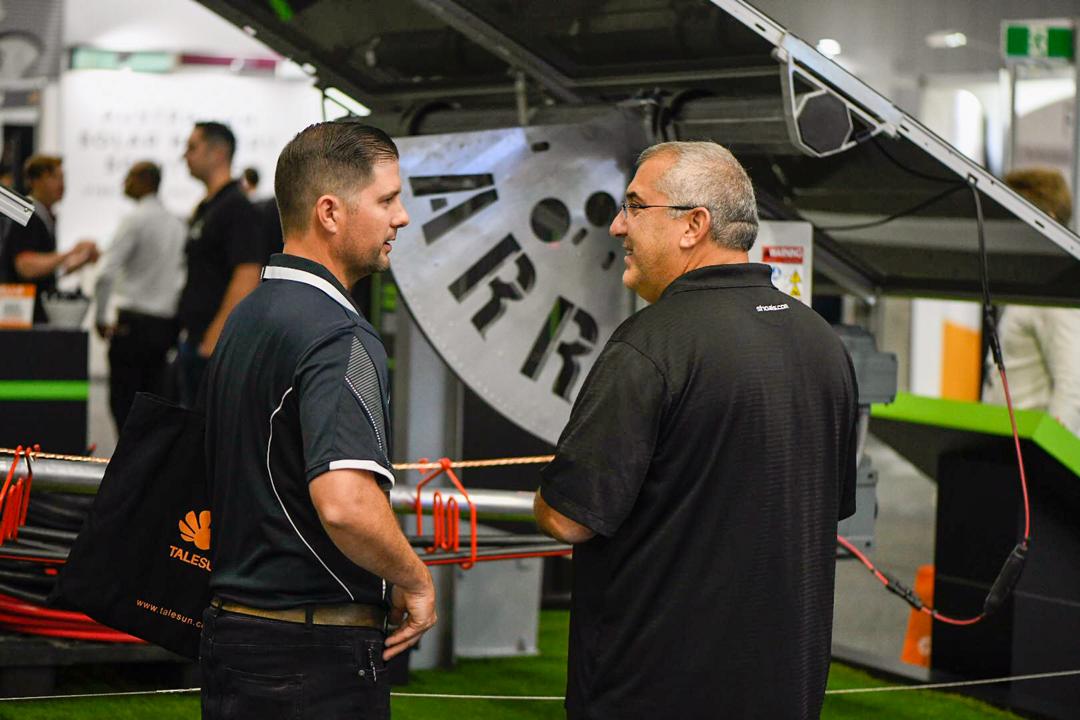
What else is happening in the Australian market?
German inverter giant SMA Solar Technology reports that the Australian large scale solar market has exceeded its expectations in 2019, as big PV projects continue to move forward despite regulatory uncertainty. Read more:
SMA bolsters grid integration service, Australian solar market “blueprint” of things to come
The Clean Energy Council and Monash Business School have combined forces to provide an educational scholarship for women in the renewable energy industry looking to better their negotiation and public speaking skills. Read more:
CEC & Monash Business School combine forces to offer women in leadership grant
The Northern Territory Government has released a discussion paper as it looks to form a coherent strategy toward electric vehicle integration. Read more:
NT releases EV discussion paper in drive towards implementable strategy
The Australian Energy Market Operator (AEMO) has undertaken a review on how Australia compares with other international power systems and suggested that the theoretical limits on wind and solar penetration may need to be defined with an eye on the power system stability. Read more:
AEMO brings up staged approach to energy transition
SolarEdge, one of the world’s foremost solar inverter companies, has announced its shift toward electric vehicles (EVs) with the release of its EV charging single phase inverter. Read more:
SolarEdge integrates EVs with two-in-one solution
The Brisbane-based energy storage manufacturer has been approved by Australia’s Clean Energy Council for its SunRise Home Battery system. Read more:
RedEarth earns CEC approval for home battery systems
SMA has introduced a firmware update to its inverter range that will take whole or partially shaded modules out of the power output equation. Read more:
Advanced MPP tracking introduced with SMA ShadeFix
Electricity is the single biggest cost incurred in the winemaking process. Looking to save on bills, and save the environment, wineries across Australia are rapidly up-taking solar PV. Read more:
Do I detect a hint of sunlight? Australia’s wineries harvest solar energy
The NSW Solar for Low Income Households trial announced last year began this week with room for up to 3,000 successful applicants to enjoy the significant savings to household electricity bills provided by a rooftop solar PV installation. Read more:
NSW Solar for Low Income Households trial begins

The pv magazine team yesterday evening!
We want to thank NEXTracker for putting on a lovely function by the river yesterday evening.
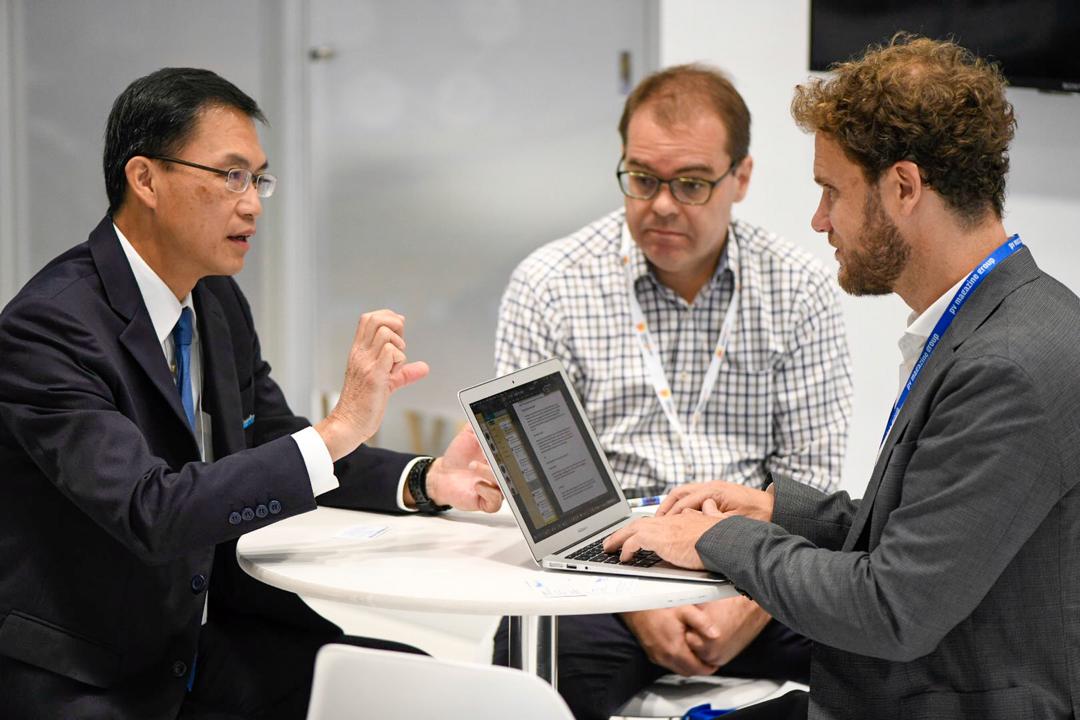
Trina closing in on first Australian TrinaPro project
At one time the former dominant module supplier to Australia, Trina Solar is now looking to gain traction in the utility-scale segment with its integrated TrinaPro product. And it’s closing in on locking its first TrinaPro project in Australia – a 10 MW array that would be set for construction in 2020, all things going to plan.
TrinaPro integrates the company’s modules, tracker and power electronics into an integrated PV power plant design – that it says can deliver at least a 3-5% power output boost over conventional systems. Trina reports that it has supplied 3 GW of project globally with TrinaPro.
Trina reports that the power boost through deploying its integrated module, tracker, inverter product comes from the ability to apply intelligent algorithms that optimize aspects such as tracker orientation and inverter MPPT.
“Trina is the [project] designer and will work closely with the EPC and how to do the system construction,” said Ku Junheon, Trina’s Senior Sales Director, APAC. “For that aspect Trina will not take away the EPC job. EPC is not our business focus.”
Trina says that it currently enjoys 20% market share in the ‘non utility’ segment of the Australian market.
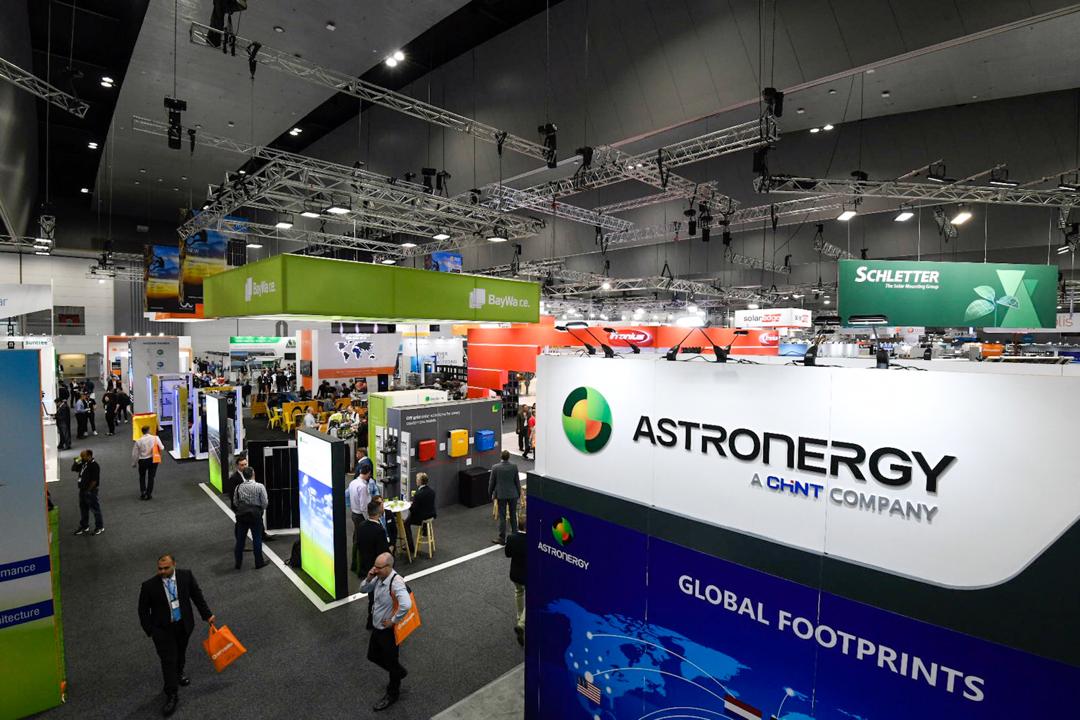
View of the trade show floor
Once again the buzz in the air is palpable at All Energy Australia on Day 2!
What's happening around All Energy Australia?
Great presentation from @darrenhmiller head of @ARENA_aus about the extraordinary potential for renewable hydrogen. Australia can power Asia and the world. #AllEnergyAU pic.twitter.com/dxHBgDqAhS
— Kane Thornton (@kanethornton) October 23, 2019
Renewable energy industry buzzzzz @AllEnergyAU @cleannrgcouncil @EECouncil #EnergyEfficiency #renewableenergy pic.twitter.com/Ou6np2HEGL
— Stephanie Bashir (@StephanieBashi2) October 23, 2019
#exports are the pot of gold at the end of the #hydrogen rainbow” – @darrenhmiller 🌈💰@ARENA_aus @nrgefficiencyau @EECouncil #energytransition #AllEnergyAU #EEE19 pic.twitter.com/WG2QDlq2oW
— Holly Taylor (@hollymtaylor_) October 23, 2019

The full power house from Q Cells
Entering the Australian market 10 years ago, Hanwha Q Cells solar module developers and manufacturers would not have foreseen the market for home batteries, nor the potential that distributed energy resources (DER) would provide to Australia’s transmission system at a time of rapid transition from coal-fired power to renewable-energy sources.
DER has been the underlying hot topic at All Energy, as loads shifted from utility-scale projects to rooftop resources, and Q Cells launched its Q.Home integrated battery-inverter package into the fray.
“We’re trying to build today’s foundation for a better energy future tomorrow,” said Ricky Gu, System Engineering Manager for Hanwha Q Cells as he introduced the wall-mounted version (there is also a floor-standing unit) of Q.Home to an interested crowd.
A 10-year product-and-performance warranty that wraps Q Cells rooftop solar systems with the Q.Home smart-battery package is billed as the biggest drawcard for consumers who don’t want to wrangle multiple longevity guarantees. The system is also scalable, from 4 kWh to 12 kWh.
As a multitasker, Q.Home can simultaneously take in solar irradiance, and discharge to power your appliances, while reporting to a remote-monitoring platform. And the integrated system comes with a 3 kW backup circuit — to keep your fridge, router, laptop and a few lights running in case of blackout monitoring.
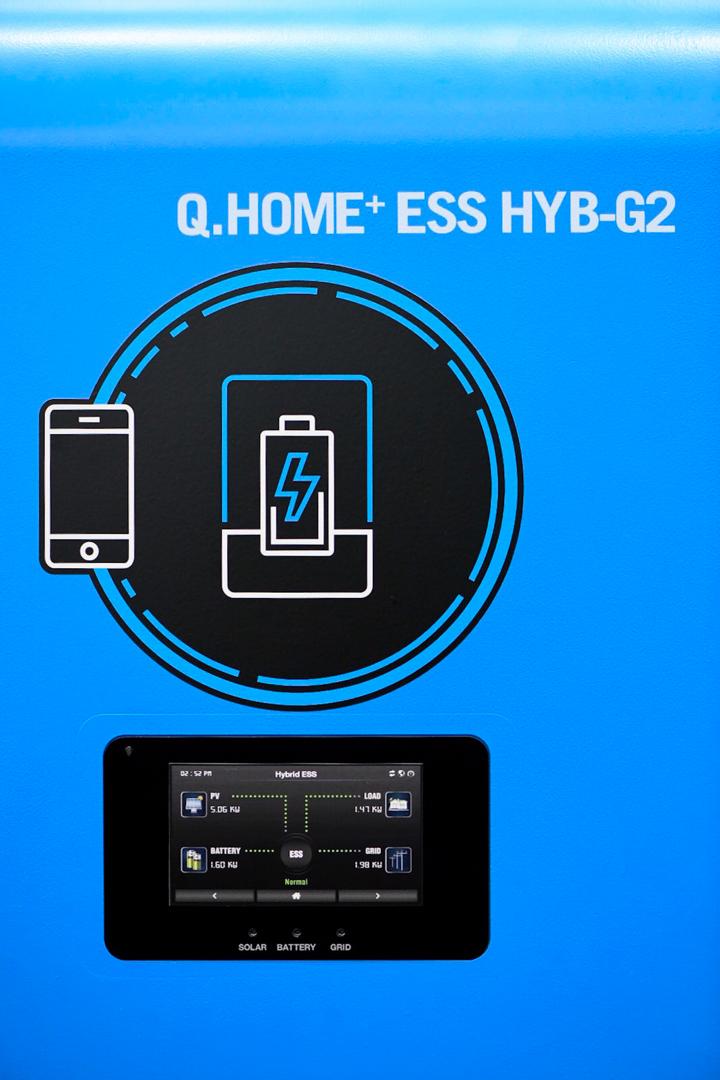
“Even though it has a 5 kW inverter,” says Gu, Q.Home will accept solar system oversizing up to 6.6 kW, and is expandable as your needs increase — say when that EV glides into your garage.
VPP and load-shifting capabilities for Q.Home are being developed in tandem with SwitchDin — known for it’s DER-management software, and should be available by end of year, says Gu.
The battery itself, he adds, is a product of Samsung, another renowned Korean technology company, while the inverter is produced by Hansol — making Q.Home fully Korean manufactured.
Gu and his Q Cells colleagues laugh about batteries shrinking in stature as they gain in power. Not long ago, he says, a battery of Q.Home capability would have been about half the size of the bar being set up for happy hour at the Q Cells stand. Now it’s a sleek moulded unit, barely protruding from its wall mount.
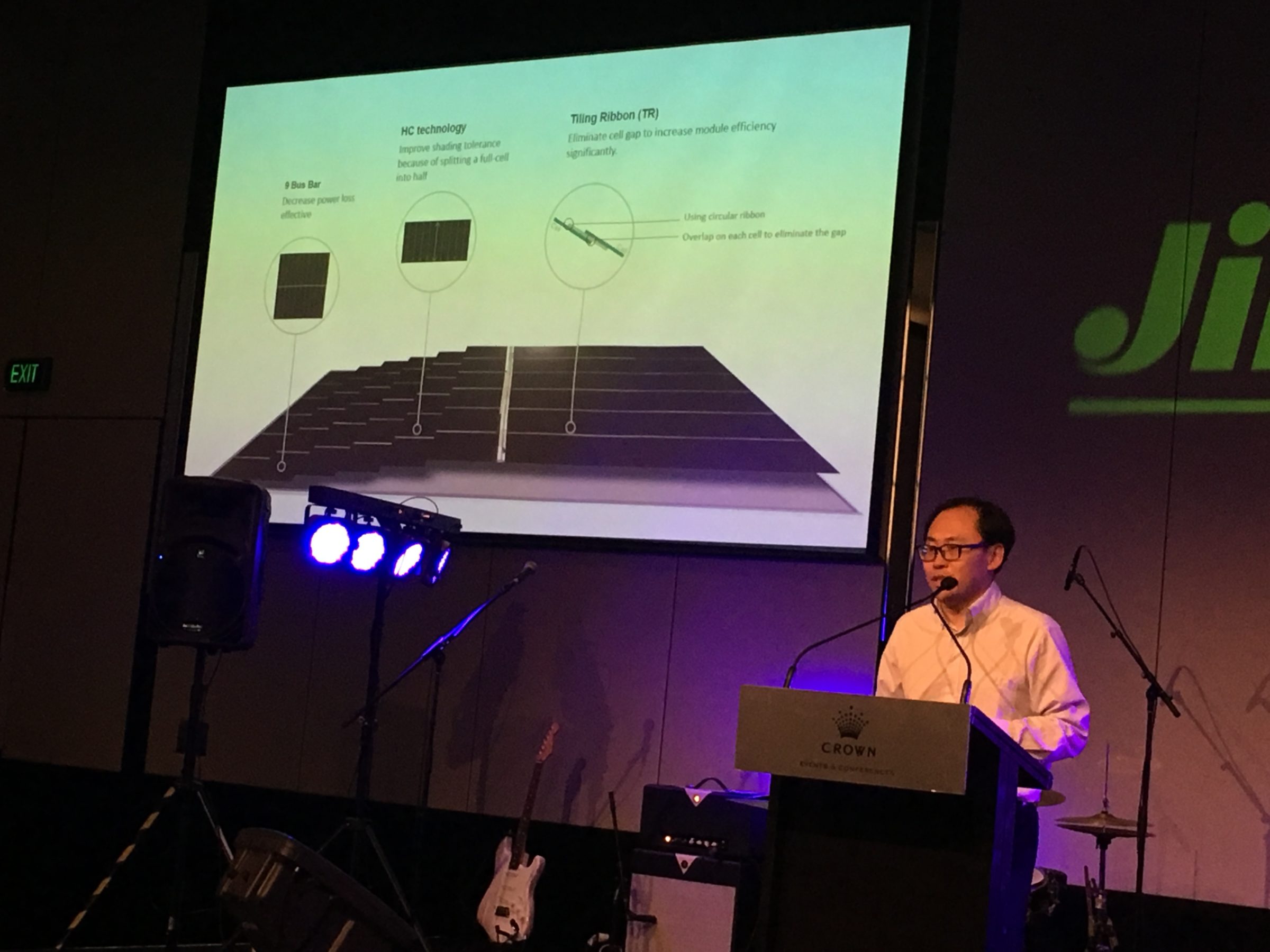
How the Tiger got its stripes
At the tail end of an All Energy Day day 1 that only highlighted the competitiveness of the solar-module market, Dr Hao Jin, R&D Vice President of JinkoSolar, officially announced Tiger.
With a module efficiency of 20.78%, the new product can generate up to 460 Wp of power. Dr Jin heralded it as “a roadmap for the performance of the solar cell”.
He said that most significant among the breakthroughs behind the performance increase, is tiling ribbon technology, which improves the lifetime of the modules, reduces the inter-cell gap and increases efficiency.
In addition, Tiger’s 9-busbar technology reduces the distance between the main busbar and finger grid line, which minimises resistance loss and increases power output. Half-cut construction improves shading tolerance.
The Tiger is available in mono- and bifacial configurations. “Personally,” said Dr Jin, “I like the transparent backsheet bifacial.”
Speaking at the Tiger launch, Alok Verma JinkoSolar’s Key Account Leader for Utility Projects in Australia, said the company is currently modelling bifacial modules for several large-scale solar farms in Australia; and can demonstrate via testbeds in China the increase in power output delivered when the rear panels face various surfaces, such as grass, sand, white painted surfaces and cement, as might be found in rooftop installations.
It’s a jungle out there, and Jinko names its products accordingly.
Read more at:
SMA bolsters grid integration service
SMA bolsters grid integration service, Australian solar market “blueprint” of things to come: German inverter giant SMA Solar Technology reports that the Australian large scale solar market has exceeded its expectations in 2019, as… https://t.co/LlOKcbqrzp #pv #solarpv #solar pic.twitter.com/7ah4ew3aRM
— pv magazine Australia (@pvmagazineoz) October 23, 2019

